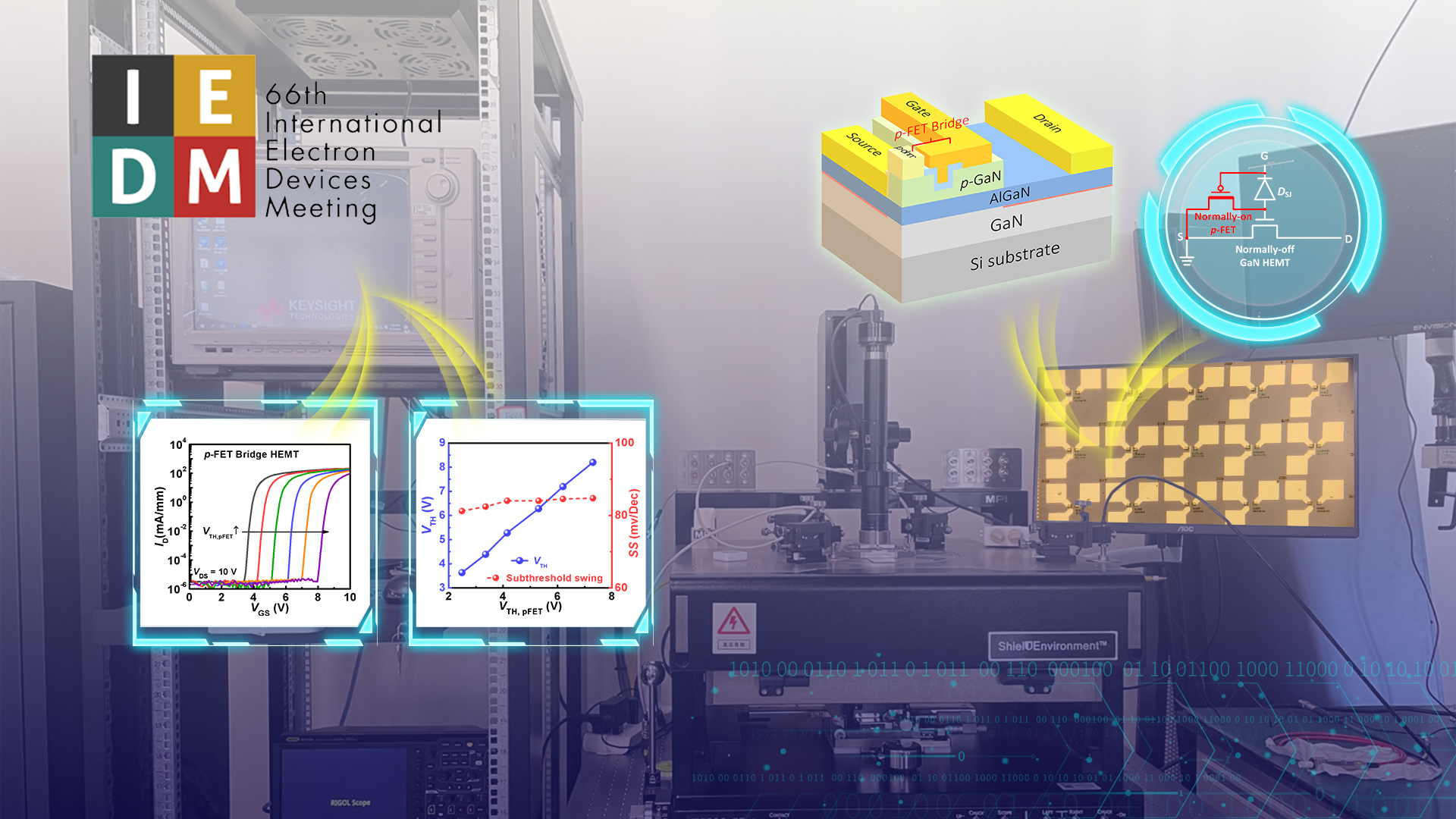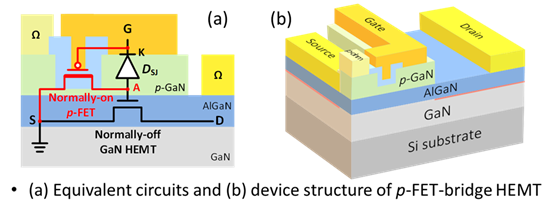
Date2021-06-08/
Recently, the research group of Assistant Professor Mengyuan Hua from the Department of Electrical and Electronic Engineering (EEE) at the Southern University of Science and Technology (SUSTech) pioneered the idea of using p-type GaN transistors to optimize the performance of GaN power devices based on the commercial GaN power transistor platform. The research group used this idea to successfully demonstrate GaN power transistor with high threshold voltages and high threshold voltage stability. Based on this idea, they proposed a future way for fabricating GaN power transistors with high threshold voltages, low on-resistance, and low reverse conduction loss simultaneously.

Their research, entitled “E-mode p-GaN Gate HEMT with p-FET Bridge for Higher VTH and Enhanced VTH Stability,” was published in the IEEE International Electron Devices Meeting (IEDM), a top conference in the field of electronic devices. It is the first IEDM work from a university in mainland China in the field of GaN power electronic devices. Other Relevant research studies were also published in the IEEE Electron Device Letters (IEDL), one of the top journals in the field of electronic devices, entitled “Decoupling of Forward and Reverse Turn-on Threshold Voltages in Schottky-Type p-GaN Gate HEMTs”.
With the power-hungry electronic devices developing rapidly, more efficient control of electrical energy becomes much more urgent. Compared with traditional silicon-based devices, GaN power devices have lower specific on-resistance, smaller terminal capacitances, and higher heat dissipation efficiency. Therefore, they are regarded as essential players in the next generation of power applications. However, the existing commercial GaN power transistors based on “Schottky-type p-GaN gate” have problems such as low threshold voltages and threshold voltage instability, which puts forward stringent requirements on the gate drive circuit and raises challenges to the safety of the entire circuit system.
Existing studies have found that the threshold voltage instability of commercial GaN power transistors based on the “Schottky-type p-GaN gate” mainly comes from the p-GaN layer on the gate. When the amount of hole in the p-GaN layer is insufficient, the threshold voltage of the power transistor will shift positively. In a conventional GaN power transistor, the amount of hole in the p-GaN layer cannot be directly controlled since the p-GaN layer is not directly electrically connected to any terminal, resulting in instability of the device threshold voltage.

Figure 1. The cross-section of the proposed device structure
Professor Hua’s research group pioneered the idea of connecting the p-GaN layer of the gate to the source through a p-type transistor. The hole exchanging between the p-GaN layer and the source can be controlled through the p-type transistor. The threshold voltages of the device, therefore, can be modulated and stabilized. The research team demonstrated GaN power transistors based on this idea. It successfully raised the device’s threshold voltage from 1.7 volts to a range of 3.2-8.4 volts that can be adjusted freely, and high threshold stability was achieved.

Figure 2. The devices with adjustable threshold voltages
Based on this structure, the research group proposed a device architecture that reduces the specific on-resistance and reverse conduction loss simultaneously. In traditional GaN power transistors, the threshold voltages, reverse conduction loss, and specific on-resistance are strongly coupled. It is almost impossible to optimize one of the performances without affecting the others. The proposed structure decouples the threshold voltages, reverse conduction loss, and specific on-resistance to a large extent, thereby providing room for optimizing the three properties simultaneously.
Professor Mengyuan Hua at SUSTech is the corresponding author of this paper, while SUSTech is the correspondence unit. The main participants of this work are Junting Chen, Chengcai Wang, Ling Liu, and Lingling Li from Professor Hua’s group. Their research was supported in part by the National Natural Science Foundation of China (NSFC).
Paper Link:
